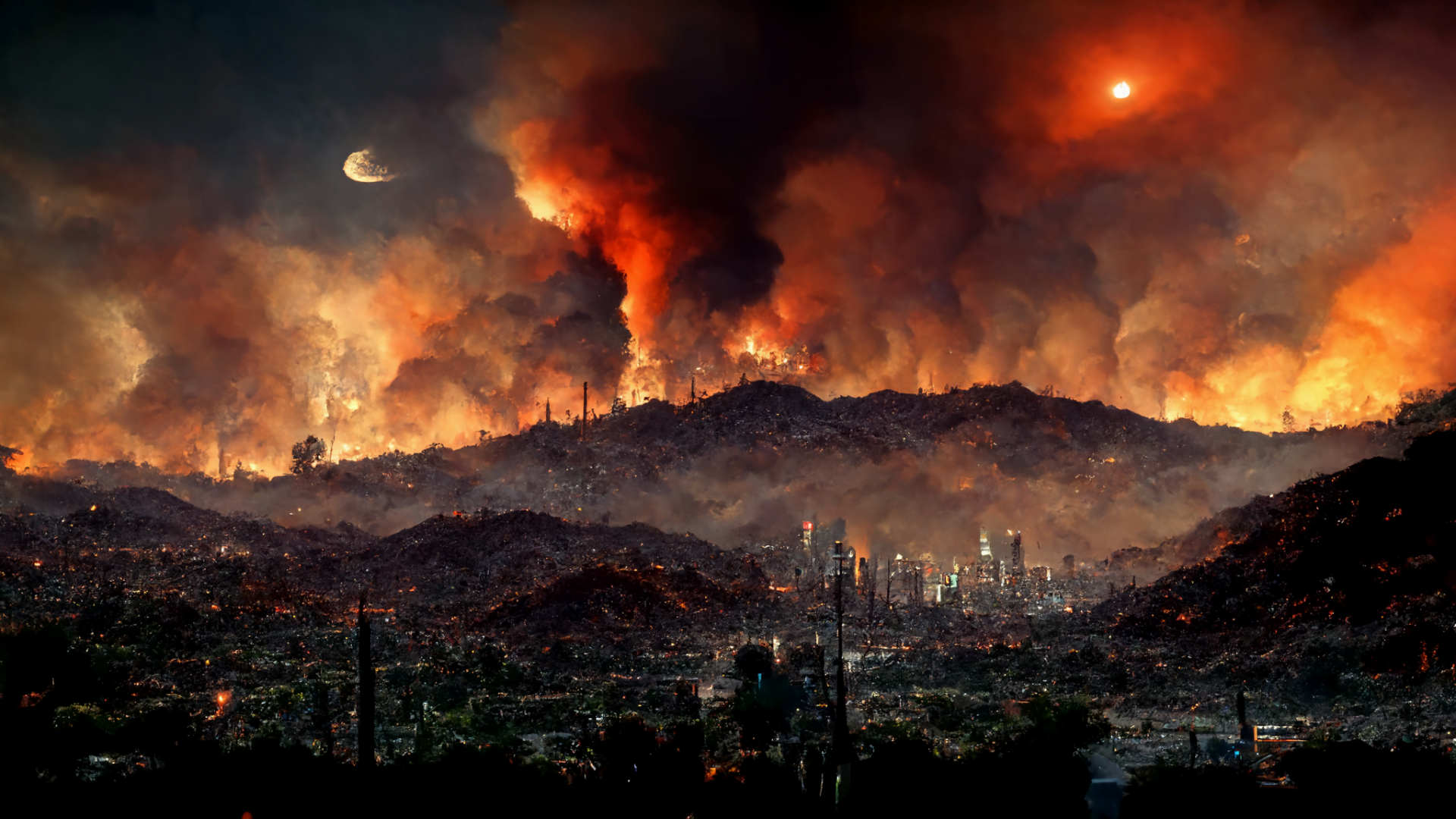
Creating a campaign using Artificial Intelligence
By Maddie Davies and Raquel Pinto
Artificial intelligence has been making its way into brand and PR campaigns more and more over the past few months – and will no doubt be seen a lot in 2023 as well. But what is the best way to use it for link building?
We were recently tasked with creating a campaign to help launch Uswitch.com’s net zero energy tool, to not only promote the tool itself but also gain valuable links back to it.
For the first time in the PR team, we used Midjourney, an AI imagery creation tool, to create newsworthy assets.
Using AI For A Digital PR Campaign
We wanted to create a digital PR campaign that went beyond the typical formats that we all know and love, but we still had confidence in that it would build relevant links into the Uswitch.com net zero page. As the page is designed to inform Britons on how to reduce their carbon footprint, we went into the ideation session knowing we needed a story that highlighted the seriousness of the climate crisis and how our actions are impacting the planet.
What better way to tell people the implications of our actions than *showing* them what damage we are doing?
So to achieve that, we decided to create images of 20 famous places from around the world in the year 2100, having been affected by climate change. Rather than using an artist to mock up the images, we wanted to put AI to the test and use it to predict what these recognisable places could look like in the future. As artificial intelligence has become so much more, well… intelligent, over the last couple of years, we knew we could create hyper-realistic photos by using a set of parameters and various prompts.
But to ensure that the prompts given to the image generator were reflective of the ways climate change will affect each destination in 2100, we referred to the latest report from the IPCC which projects the temperatures, flooding risk and sea levels in 70 years’ time. We took the main predicted impact that each place will likely be faced with in the future and included that within the prompt so the AI image generator could build something based on scientific data.
Creating assets using AI for destinations all around the globe would not only give us the chance to pitch the story globally but also allow us to get links from extremely relevant environmental and science websites, as well as technology sites that have an interest in AI.
How To Use Midjourney For Digital PR
Midjourney is one of the more advanced AI-based image generators out there, and it works by creating images based on prompts (simple text descriptors) from the user. One of the benefits of using Midjourney is that the beta version is available to everyone, unlike some other AI image generators.
The only thing you need to use the beta version is a free Discord account, which will allow you to give text prompts to the Midjourney bot. However, as we were using the image generator for corporate purposes, we had to subscribe to the corporate plan which cost $600. Before you embark on using Midjourney images, do read up on the usage information, so you don’t get into any legal hot water.
Once we had the Discord account and paid for the corporate subscription, we simply had to join ‘Newcomer Room’. It’s here where you can enter your prompts, which the bot then uses to create the images. Within the room, you’ll be able to see the hundreds of other images that have been previously created that day.
To start creating your images, you need to begin by typing ‘imagine/’ into the text box, followed by your prompts.
The prompts
To create the imagery we had in mind, we inserted the following prompt into the Midjourney chatbot:
[city] from above, apocalypse, [predicted climate-change effect], hyper realistic, photo realism, futuristic, 8k, 2100, dusk sky, cinematic–ar 16:9
Though your prompts could be simpler, for this project we wanted to generate multiple images that had a consistent art style. Therefore, we had to create a very detailed base prompt that included all possible information necessary for each scenario for all 20 cities included in the campaign.
To give the images the most realistic, photo-like finish, the prompt included ‘8k’, ‘photo realism’ and ‘hyper realistic’ as part of it. Considering this was a future prediction, we also included the requirements ‘futuristic’ and ‘2100’. To ensure all images had the same dimensions we used ‘ar 16:9’ for a cohesive aspect ratio throughout.
This prompt alone helped us generate four images, and when we had the ideal image we heightened its resolution within Midjourney using the Upscale (U) option.
In some cases, however, the images generated required a slight correction. In this case, we used the Variation (V) option within the AI tool to create four new images with a similar artistic style and composition until we had the result that worked best.
And here are the results…
AI Imagines How The World Will Look In 2100
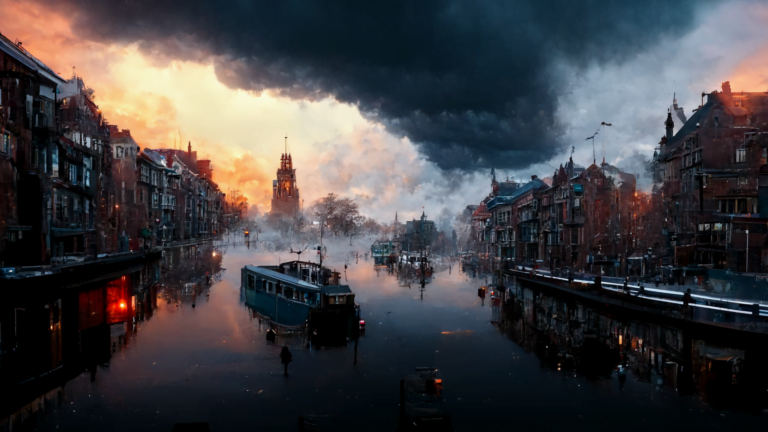 Amsterdam
Amsterdam
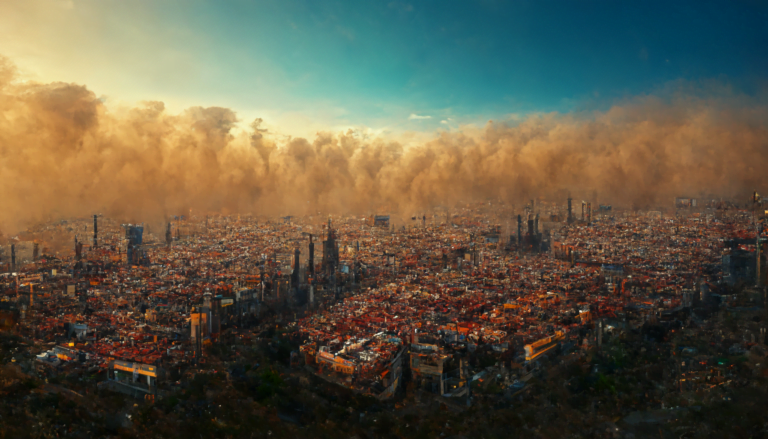 Barcelona
Barcelona
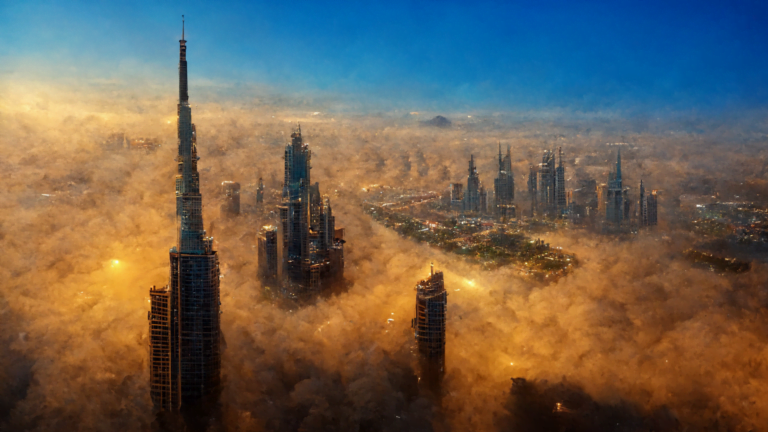 Dubai
Dubai
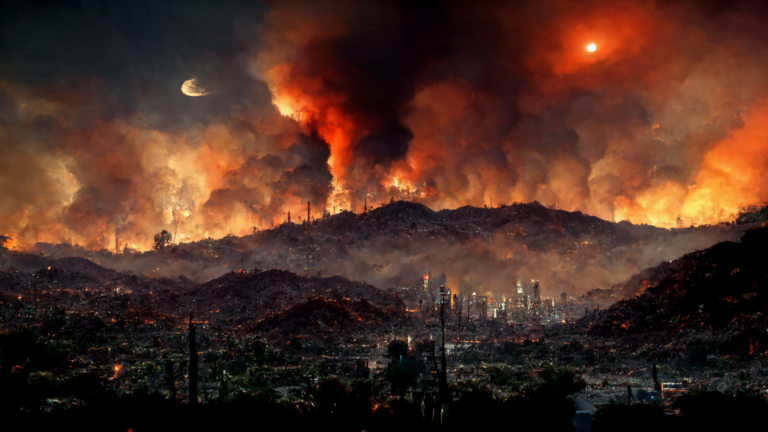 Los Angeles
Los Angeles
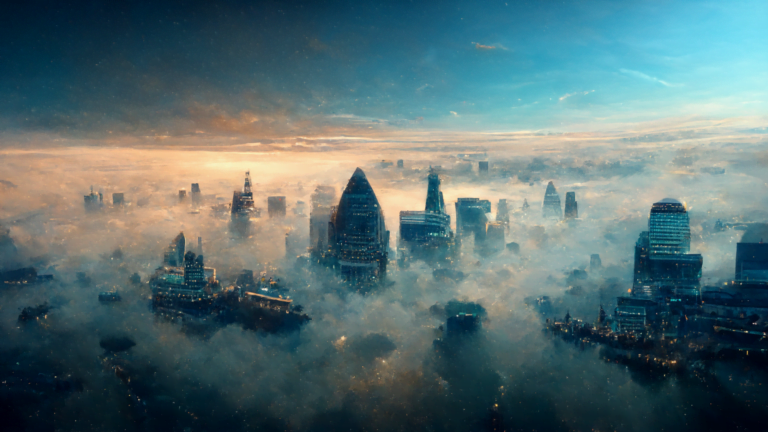 London
London
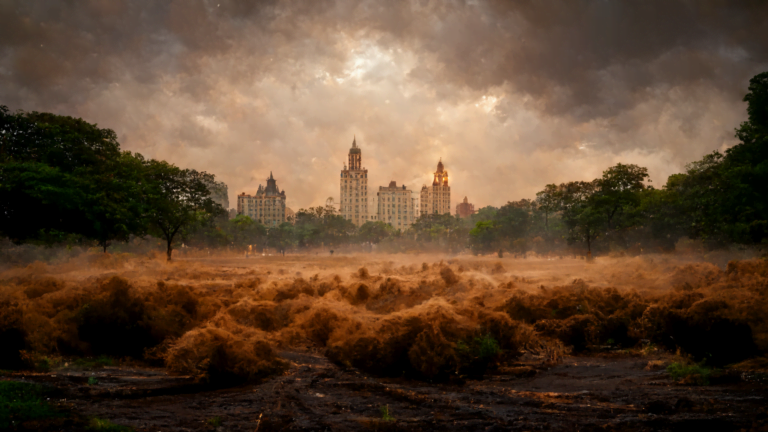 New York
New York
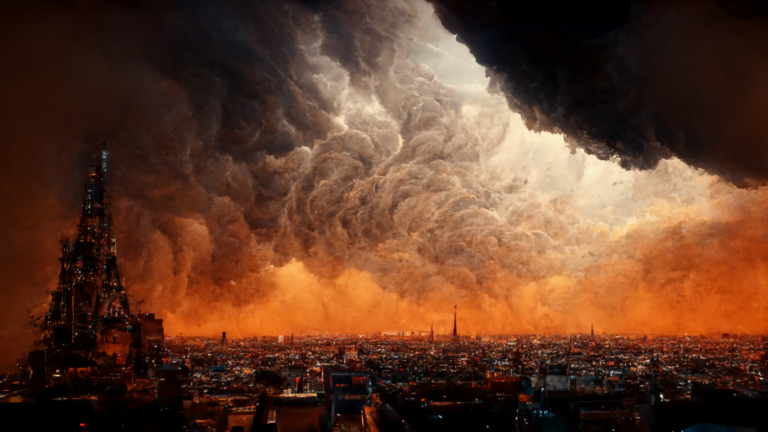 Paris
Paris
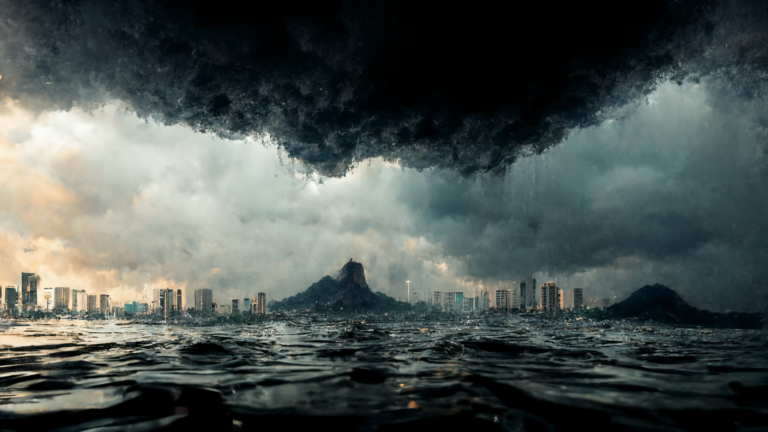 Rio de Janeiro
Rio de Janeiro
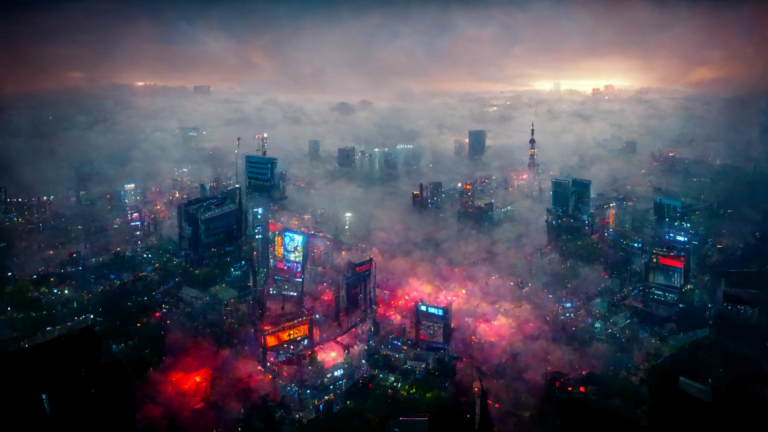 Tokyo
Tokyo
Images were also created for Agra, Auckland, Beijing, Berlin, Edinburgh, Giza, Kruger National Park, Mexico City, Moscow, Sydney and Toronoto.
How did the images perform?
As COP27 began at the start of November, we knew conversations around the environment would increase and media interest would spike, making it the perfect time to start pitching the AI images to the press.
We started pitching a week prior to COP27 commencing in Sharm El-Sheikh and we successfully landed placements within the first couple of days of pitching. Highlights include:
- Geographical (DR 68)
- One Green Planet (DR 80)
- Greener Ideal (DR 60)
- Conde Nast Traveller India (DR 73)
So far, the images have built 17 links to the client’s key target category page and 20 pieces of coverage, with 119,000 estimated views (source: CoverageBook) as a result of this coverage.
What did this teach us?
Using an artificial intelligence image generator, Midjourney, for the first time was of course a risk. Not only did it require an extra budget but it was also a time-consuming process in order to create the perfect images. Why? Although AI is incredibly advanced in 2022, it also takes simple prompts to their simplest forms meaning we had to play around with our text and parameters on several occasions.
However, the striking images that pictured the Los Angeles hills up in flames and Amsterdam underwater as a result of rising sea levels clearly struck a chord with the press. The results present readers with a visualisation of what an incredibly smart tool predicts the future will look like if we fail to make changes which pack a greater punch than statistics and data alone.
As the images were explicitly depicting a future where the world hasn’t achieved net-zero status, it made sense for journalists to link back to the Uswitch.com page as the source of the images and the information.
Digital PR can be tricky when you are trying to strike the balance between being creative and wanting to rely on tried-and-tested formats that deliver the goods. However, this digital PR campaign has proved that if the assets you are creating are a natural fit for your brand and its category page, and they have the authority to play in this space then you will have a greater chance of success.
If you are interested in the different ways digital PR campaigns work and how we approach this type of work here at Propellernet, you can read up on all our work here.



